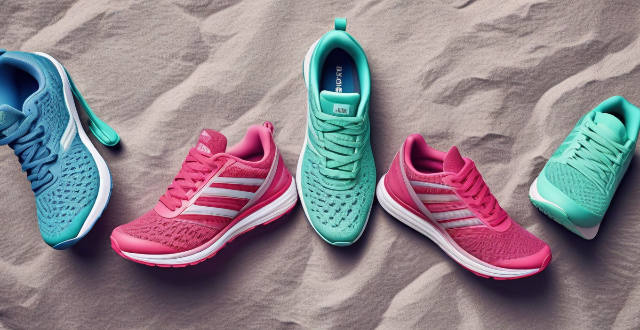Body Running

Is there a specific diet that can enhance my running abilities ?
To improve your running abilities, it is important to consume enough carbohydrates for energy, protein for muscle repair and recovery, healthy fats for overall health, and stay properly hydrated. Incorporating these nutrition tips into your daily routine can help enhance your running performance.

What is the proper breathing technique while running ?
Proper breathing technique is crucial for runners to improve performance, reduce fatigue, and prevent injuries. Diaphragmatic breathing involves taking deep breaths using the diaphragm muscle for efficient oxygen exchange. Rhythmic breathing matches breathing rhythm to stride pattern, promoting even and consistent breathing. Nasal breathing warms and humidifies air, but mouth breathing can be used when necessary. Relaxation and good posture are also important for optimal breathing mechanics. Incorporating these techniques into your running routine can enhance your overall running experience.

What role does mental preparation play in improving running performance ?
Mental preparation is key to improving running performance. It involves setting clear goals, using visualization techniques, practicing mindfulness exercises, and employing self-talk strategies. By training the mind to focus on the task at hand, manage stress, and maintain motivation, runners can enhance their physical performance and achieve their running goals.

You have made several mistakes in running. Pay attention to diet and provide correct energy for running

Can strength training help improve my running performance ?
Strength training is an essential component of any fitness program, including running. It helps to build muscle strength and endurance, which can significantly improve your running performance. Strength training can help increase muscle strength and endurance, improve running economy, reduce the risk of injury, and enhance posture and body alignment. To incorporate strength training into your running routine, start slowly with light weights and gradually increase intensity over time. Choose exercises that target major muscle groups used during running, such as glutes, hamstrings, quadriceps, calves, and core muscles. Incorporate plyometric exercises to improve explosive power and acceleration. Allow sufficient recovery time between sessions to avoid overtraining and potential injuries.

How can I improve my running form and avoid injuries ?
Improving your running form is crucial for both performance enhancement and injury prevention. Here are some tips on how to improve your running form and avoid injuries: 1. Proper Warm-Up and Cool-Down 2. Focus on Posture 3. Foot Strike and Landing 4. Cadence and Step Length 5. Strength Training and Cross-Training 6. Wear Proper Footwear 7. Gradual Progression 8. Listen to Your Body

Can running help me lose weight quickly ?
Running is a popular form of exercise that can help you lose weight quickly, but it's important to understand the factors that contribute to weight loss and how running fits into the equation. In this response, we'll explore the benefits of running for weight loss and provide tips on how to maximize your results. Benefits of Running for Weight Loss: 1. Burns Calories: Running is a high-intensity cardio workout that burns a significant number of calories per minute. The more calories you burn during exercise, the easier it is to create a calorie deficit, which is necessary for weight loss. 2. Increases Metabolism: Running can boost your metabolism, allowing you to burn more calories even when you're not exercising. This increased metabolic rate can lead to faster weight loss over time. 3. Builds Muscle: Running helps build lean muscle mass in your legs, glutes, and core. Muscle tissue burns more calories at rest than fat tissue, so having more muscle can contribute to faster weight loss. Tips for Maximizing Weight Loss with Running: 1. Set Realistic Goals: Aim for a healthy rate of weight loss, such as 1-2 pounds per week. Rapid weight loss can be harmful and difficult to maintain in the long term. 2. Combine Cardio and Strength Training: Incorporate strength training exercises into your routine to build muscle and increase your overall calorie burn. Focus on compound movements like squats, lunges, and deadlifts to target multiple muscle groups at once. 3. Stay Consistent: Make running a regular part of your routine, aiming for at least 3-4 sessions per week. Consistency is key to achieving long-term weight loss goals. 4. Watch Your Diet: Pay attention to what you eat and try to consume a balanced diet rich in whole foods, lean proteins, and healthy fats. Avoid processed foods, sugary drinks, and excessive amounts of alcohol, which can hinder weight loss efforts. 5. Rest and Recovery: Allow your body time to rest and recover between running sessions to prevent injury and avoid burnout. Incorporate stretching and foam rolling into your routine to aid recovery and improve flexibility. Conclusion: While running can be an effective way to lose weight quickly, it's important to approach your fitness journey with patience and realistic expectations. By combining running with strength training, watching your diet, and staying consistent with your workouts, you can maximize your weight loss results and achieve a healthier lifestyle.

What are some dynamic warm-up exercises that can be done before running ?
Dynamic warm-up exercises are essential for runners to improve performance and reduce injury risk. These include high knees, butt kicks, leg swings (front and side), walking lunges, toy soldiers, ankle circles, side shuffles, plank to runner's lunge, jumping jacks, and light jogging. Each exercise targets specific muscles and joints, enhancing mobility, flexibility, and circulation. Completing these warm-ups prepares the body for running, ensuring better efficiency and comfort during the activity.

What is the ideal cadence (steps per minute) for efficient running ?
The ideal cadence for efficient running varies based on individual factors but generally falls within a range of 160 to 180 steps per minute. A higher cadence can reduce impact forces, improve running economy, and enhance coordination. Beginners may start with a lower cadence and gradually increase it, while experienced runners may experiment within the recommended range. Measuring cadence involves timing a chosen distance and counting steps, then calculating steps per minute. Tips for increasing cadence include shortening stride length, focusing on quick feet, using a metronome app, and practicing on a treadmill.

How can I modify my workout routine to accommodate my changing body during pregnancy ?
As a fitness enthusiast, it's important to adapt your workout routine as your body changes during pregnancy. Start with low-impact exercises like walking or swimming and gradually increase intensity over time. Focus on strength training and avoid high-impact activities like running or jumping. Listen to your body and adjust your workout routine accordingly. Hire a personal trainer if needed to create a customized workout routine that meets your needs and accommodates your changing body during pregnancy.

How important is footwear when it comes to running techniques ?
Footwear plays a crucial role in running techniques, improving performance and reducing the risk of injuries. Proper footwear should provide cushioning, support, fit, comfort, traction, grip, breathability, and durability. To choose the right pair of running shoes, consider your foot type (neutral, flat, or high arches), running style (heel striker, midfoot striker, or forefoot striker), terrain (road or trail), and distance. Try before you buy to ensure proper fit and comfort.

What are the best running shoes for beginners ?
Finding the best running shoes for beginners involves considering factors such as comfort and fit, traction and durability, weight and responsiveness, style and personal preference. Look for shoes with adequate cushioning, arch support, well-padded tongue and collar, durable outsole, sturdy midsole, breathable upper material, lightweight design, responsive cushioning, flexible sole, appealing color and design, reputable brand reputation, and reasonable price point. By taking these factors into account, you can find a pair of running shoes that will support your journey towards becoming a regular runner.

In what ways do factors like body composition and flexibility affect sports biomechanics ?
In sports biomechanics, body composition and flexibility are crucial factors affecting performance. Increased muscle mass and a high strength-to-weight ratio enhance power in weightlifting and sprinting. A lower fat percentage improves aerodynamics and reduces energy expenditure in endurance activities. Higher bone density offers better support in impact-heavy sports. Greater flexibility increases the range of motion, preventing injuries and improving efficiency in rapid movements. Optimal body composition and flexibility can significantly improve an athlete's performance and reduce injury risk.

What are some easy ways to fix a slow-running computer without professional help ?
A slow-running computer can be frustrating, but there are several easy ways to fix it without seeking professional help. In this article, we will discuss some simple steps you can take to improve the performance of your computer, including checking for viruses and malware, uninstalling unnecessary programs, cleaning up your hard drive, managing startup programs, updating your operating system and drivers, and monitoring resource usage. By following these easy steps, you can significantly improve the performance of your slow-running computer without seeking professional help.